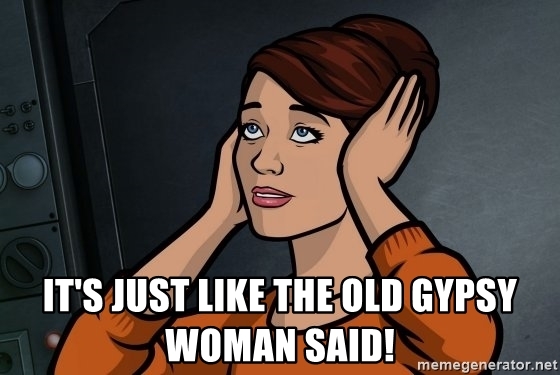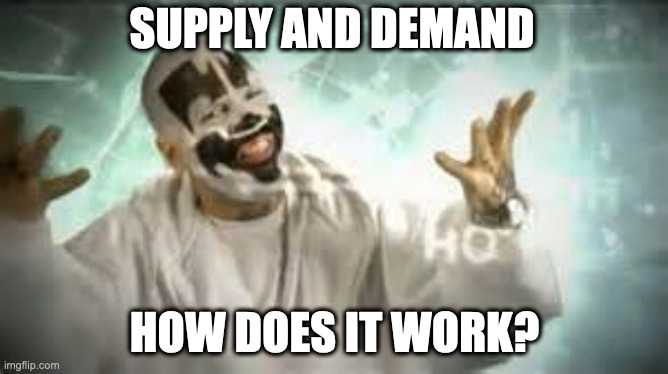If you had any doubts that Reuters, like the rest of the MSM, was completely captured by social justice warriors, this story from former Reuters data scientist Zac Kriegman should remove them:
Until recently, I was a director of data science at Thomson Reuters, one of the biggest news organizations in the world. It was my job, among other things, to sift through reams of numbers and figure out what they meant.
About a year ago, I stumbled on a really big story. It was about black Americans being gunned down across the country and the ways in which we report on that violence. We had been talking nonstop about race and police brutality, and I thought: This is a story that could save lives. This is a story that has to be told.
But when I shared the story with my coworkers, my boss chastised me, telling me expressing this opinion could limit my ability to take on leadership roles within the company. Then I was maligned by my colleagues. And then I was fired.
Snip.
I had been at Thomson Reuters for over six years—most recently, leading a team of data scientists applying new machine learning and artificial intelligence algorithms to our legal, tax and news data. We advised any number of divisions inside the company, including Westlaw, an online legal research service used by most every law firm in the country, and the newsroom, which reaches an audience of one billion every day around the globe. I briefed the Chief Technology Officer regularly. My total annual compensation package exceeded $350,000.
In 2020, I started to witness the spread of a new ideology inside the company. On our internal collaboration platform, the Hub, people would post about “the self-indulgent tears of white women” and the danger of “White Privilege glasses.” They’d share articles with titles like “Seeing White,” “Habits of Whiteness” and “How to Be a Better White Person.” There was fervent and vocal support for Black Lives Matter at every level of the company. No one challenged the racial essentialism or the groupthink.
This concerned me. I had been following the academic research on BLM for years (for example, here, here, here and here), and I had come to the conclusion that the claim upon which the whole movement rested—that police more readily shoot black people—was false.
The data was unequivocal. It showed that, if anything, police were slightly less likely to use lethal force against black suspects than white ones.
Analysis of the data (some of which we’ve gone into before) snipped.
Unfortunately, because the BLM narrative was now conventional wisdom, police departments, under intense scrutiny from left-wing politicians and activists, scaled back patrols in dangerous neighborhoods filled with vulnerable black residents. This led to soaring violence in many communities and thousands of needless deaths—otherwise known as the Ferguson Effect.
For many months I stayed silent. I continued to read Reuters’ reporting on the movement, and started to see how the company’s misguided worldview about policing and racism was distorting the way we were reporting news stories to the public.
In one story, Reuters reported on police in Kenosha, Wisconsin shooting a black man, Jacob Blake, in the back—but failed to mention that they did so only after he grabbed a knife and looked likely to lunge at them.
In another story, Reuters referred “to a wave of killings of African-Americans by police using unjustified lethal force,” despite a lack of statistical evidence that such a wave of police killings had taken place. (In 2020, 18 unarmed black Americans were killed by police, according to The Washington Post database.)
And in yet another, Reuters referred to the shooting of Michael Brown as one of a number of “egregious examples of lethal police violence,” despite the fact that an investigation conducted by the Justice Department—then run by Barack Obama’s Attorney General Eric Holder—had cleared the police officer in question of all wrongdoing.
A pattern was starting to emerge: Reporters and editors would omit key details that undermined the BLM narrative. More important than reporting accurately was upholding—nurturing—that storyline.
At some point, the organization went from ignoring key facts to just reporting lies. When Donald Trump declared, in July 2020, that the police kill more white than black people—this is true—Reuters, in its dispatch, repeated the false claim that blacks “are shot at a disproportionate rate.” In December 2020, Reuters reported that black Americans “are more likely to be killed by police,” citing a 2019 National Academy of Sciences study that, our reporters claimed, found that black men were 2.5 times likelier than white men to be killed by police. In fact, the only rigorous study to examine the likelihood of police use of force—Roland Fryer’s—found that police, as mentioned, were less likely to use lethal force against black Americans.
All this left me deeply unsettled: It was bad for Reuters, which was supposed to be objective and withhold judgment. It was bad for our readers, who were being misinformed. And it was bad for black people in rough neighborhoods, where local officials, prompted to take action by reporting like ours and the public outcry it triggered, were doing things like defunding the police.
Snip.
While I was gone, I started writing a post about the disconnect between what we thought was true and what was actually happening. I wasn’t sure what I planned to do with it. Maybe I would share it. More likely it would just be a kind of therapy, a chance for me to work through some of these issues.
In my post, I examined all the data I had compiled, and I cited the Justice Department’s National Crime Victimization Survey and several academic studies (see, for example, here, here, here and here) to help back up my conclusions—in addition to Fryer’s.
I also pointed out that there had been zero properly designed studies refuting Fryer’s findings. And I noted that a growing number of criminologists—like Paul Cassell, at the University of Utah; Lawrence Rosenthal, at Chapman University; and Richard Rosenfeld, at the University of Missouri-St. Louis—now believed that the false rhetoric around police bias had played a key role in the recent spike in violent crime. This suggested that the BLM lie had led to the murder of thousands of black people.
To drive home my point, I included this striking statistic: On an average year, 18 unarmed black people and 26 unarmed white people are shot by police. By contrast, roughly 10,000 black people are murdered annually by criminals in their own neighborhoods.
When I returned from my leave of absence, I was ready to post my summary to the Hub, where my colleagues regularly posted things about any number of hot-button issues. Cynthia wasn’t sure. She wasn’t just worried about my job, but also about her job, and she was worried that word would get out to the rest of our community. BLM lawn signs lined our street. Our friends sympathized with the cause. We wondered whether we’d be ostracized. We spent many hours over many weeks talking it through. I had come close to posting and then pulled back, and then again, and again. We were talking about it in couples therapy. Finally, I got the okay from Cynthia to publish. She understood that this was about me speaking freely and honestly about something I knew about, cared about and felt I had the responsibility to do something about. I took a deep breath and shared my post on the Hub. It was early May 2021.
Within an hour or two, the moderators had taken down my post.
I messaged my Human Resources contact to inquire why my post had been removed. She told me anyone could flag a post for review, at which point it would be immediately taken down. She didn’t say anything else. I had no idea who had objected or what the grounds for the objection were, or when, if ever, my post would be reinstated.
Over the next two weeks, I kept checking back with her to see when they would reinstate it. After a good bit of waiting and wondering, she told me that “a team of human resources and communications professionals” was reviewing it. I asked if I’d be allowed to discuss the moderators’ concerns with them. She said no. Finally, she told me my post would not be reinstated because it had been deemed “antagonistic” and “provocative.”
When I asked what, exactly, was antagonistic or provocative, she suggested I speak with the Head of Diversity and Inclusion. So, I scheduled a meeting.
I should mention that, while this was going on with H.R., I met with my manager, who expressed surprise and concern that I had written and then shared my post. It could hurt me at the company, she said. It could put the kibosh on any future promotions.
The next week, I met with the Head of Diversity and Inclusion. I asked what was wrong with my post. She said she couldn’t tell me, because she hadn’t been involved in the decision to remove it. (I was unclear whether she’d actually read it.)
The next week, there was another meeting—this time with H.R. and Diversity and Inclusion. I wanted to know what I had to change in my post to make it acceptable. They suggested scrubbing all instances of the term “systemic racism,” to start.
So I did that, and the piece was reinstated. I was relieved. Such discussion about facts and statistics had to be permitted. It was impossible to report the news accurately if employees were not allowed to have internal, sometimes heated discussions about pretty much anything.
Then the comments started rolling in. A handful of BLM supporters, all of them white, said that, as a white person, I had no place criticizing BLM. They called my review of the academic literature “whitesplaining” (failing to note that many of the academics I cited were black). I was publicly derided as a “troll,” “confused,” “laughable,” and “not worth engaging with or even attempting to have an intelligent conversation” with. One colleague said: “I do not believe that there is any point in trying to engage in a blow-by-blow refutation of your argument, and I will not do so. My unwillingness to do so doesn’t signal the strength of your argument. If someone says, ‘The KKK did lots of good things for the community—prove me wrong,’ I’m not obligated to do so.”
Notably absent from the attacks directed at me was even a single substantive challenge to the facts I was citing.
It was insulting and painful. Not a single executive, no one in H.R., no one in Diversity and Inclusion, condemned any of the public attacks on me. They were silent. I’m not surprised no one came to my defense. Who would take that kind of a risk? It became very clear very fast that my public takedown was intended to ensure that there would be no discussion around BLM or the question of police brutality and race.
After enduring waves of abuse, I emailed H.R. to express my concern about these attacks on me and their chilling effect. They responded by removing my post—and shutting down the conversation. I was told that, if I discussed my experience on any internal company communications channel, I would be fired.
I was distraught. Here I was trying to bring the company’s attention to how we were spreading lies that were contributing to the murders of thousands of black people, and I was compared to a Klansman sympathizer, and forbidden by the company to discuss any of it.
And fired he was.
Thou Shalt Not Question The Holy Narrative.
Mere truth will not protect you against the Inquisition…


